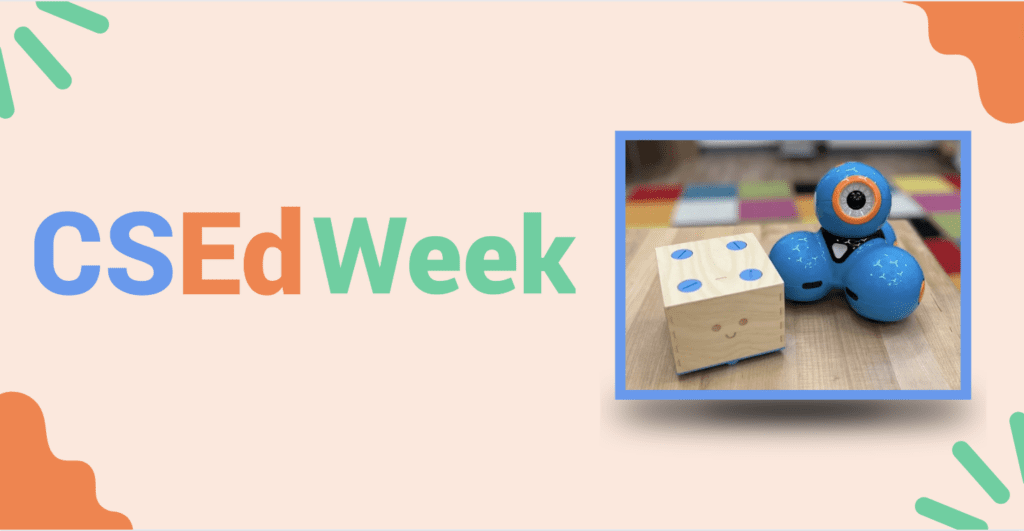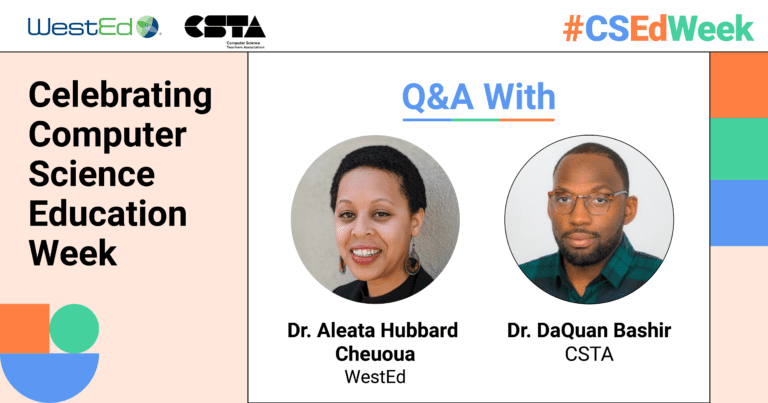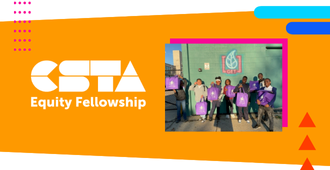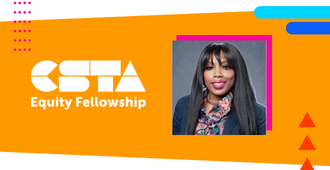On the value of early computer science education for life-long learning, creativity, and empowerment, and how to make the Hour of Code happen in your classroom this year
Cubetto from Primo Toys and Dash from Wonder Workshop – Photo by Kate O’Brian
As CSEdWeek draws near, I sense the nervous flutter of activity around planning for the Hour of Code. This annual event is scheduled during the peak of teachers’ “winter sprint,” the mad rush to fit in a few more lessons before the winter break. When I collaborated on Is Computational Empowerment Promoted in the Hour of Code? in 2021, I hadn’t yet experienced the frantic downhill slide we educators face before the holidays. I still stand by the article’s findings: opportunities for conceptual, creative, and critical engagement with computing are invaluable for students, yet few preplanned Hour of Code activities include all three (Morales-Navarro et al, 2022). Nonetheless, I now know the exhaustion that comes with this season for teachers. The last thing many of us want is to plan yet another lesson when we already feel behind on just about everything else!
In my own teaching practice, I often find that the “whys” for my student population are the most powerful motivator to try something new. Here are three reasons why I make time for my students to code:
- Exposure & Engagement: I teach students with learning disabilities (LD). While each child comes to my classroom with unique strengths and challenges, many have also experienced harm in traditional school settings where they were pushed to try harder when they really needed to try different. Introducing coding and computational thinking early broadens their repertoire of different ways to see the world. As a bonus, most students also find that the tools and platforms I teach coding with are novel, attention-grabbing, and fun.
- Creativity & Inclusivity: As a Makerspace teacher, I live by the mantra that my learners make something to learn something. My role is to introduce students to the skills and knowledge they need to make a meaningful future for themselves. Coding opens up a world of creative possibilities not only for what students can make, but also for what they believe they can become. Coding early helps dismantle the harmful, exclusive stereotypes around who codes that CS initiatives like Girls Who Code and Stitching the Loop push back against.
- Agency & Empowerment: I include Project-Based Learning (PBL) in almost all my lessons. PBL is especially powerful in CS Education considering the recent buzz around artificial intelligence that leaves many wondering just how much agency we still have in a rapidly changing tech landscape. Without encouraging techno-solutionism (since the low-tech solution can still be the best solution!), creating opportunities for students to master a variety of tools—digital and otherwise—empowers them to enact positive change on their community and the world.
Right Tool, Right Time
So, what can educators do this December when they have plenty of motivation but limited time and energy? I sympathize with those who argue that elementary students are just too young for some popular CS Ed tools, and there’s just too much going on to plan meaningful CS learning experiences from scratch. I’ll be the first to say I’ve had to cycle through several popular CS Ed platforms in my pursuit of the right fit for my LD students and learning objectives. But don’t despair: in the same way our language arts and math activities need tweaking to fit students’ needs year-to-year, teachers can still dip their toes into the wide range of coding resources available while seeking the right fit for their classes, and keep only what works for them.
Teaching struggling readers? Cubetto from Primo Toys is a Montessori-inspired robot controlled with shapes on a board instead of text on a screen. Hoping to engage learners in robotics through more than just maze-solving activities? Dash from Wonder Workshop can be decked out with an array of attachments like Gripper Building Kits and Sketch Kits to bring the “E” and “A” in STEAM to life. Eager to participate in the Hour of Code, but feeling pressed for time in other subjects? An AR/VR platform like CoSpaces can bring science, engineering, and math learning to life in 3D. I’ve used these tools and more to great effect in my own classroom, and plan to use them again this year for the Hour of Code.
But here’s the bottom line—find something that blends well with the characteristics and constraints of your teaching practice. The goal isn’t to reinvent the wheel, but rather to create meaningful chances for your students to practice computational thinking and get excited about computer science. Any coding counts!
Make It Matter – CSEdWeek & Hour of Code
Use these three practical tips to save your sanity and teach CS meaningfully this CSEdWeek:
- Explore CS Ed options with others: Despite the media’s representations of the isolated programmer, don’t go it alone. If your school or district employs an ed tech specialist, tap into their knowledge! If not, connect with your coworkers to brainstorm CS activities together or browse the teaching resources that CSEdWeek and Hour of Code have to offer—most of which are free.
- Make cross-curricular connections: Concerned that the Hour of Code will take time away from learning in core subjects? Choose a coding activity based on content area connections. For example, some “unplugged” CS activities have students hand-write programs for classmates to follow to illustrate concepts like sequences for easy ELA integration. Many CS activities can also be tailored to your specific learning objectives outside of coding.
- Embrace failure like a computer scientist: Nervous that you don’t know enough about CS to teach it? Fixing mistakes while programming is so integral to CS that the industry has its very own term for the process: it’s called debugging. Regardless of your content area of expertise, you’re no less of an authentic CS educator if you make mistakes. If anything, you’re showing your students what real programming looks like, so this is the perfect time to embrace imperfection. Happy coding!
Citations & Further Reading
CS Ed Week: Teach & Explore – “Inspire others to learn computer science”
Hour of Code: How-To – “Your guide to Hour of Code”
Project-Based Learning: Explained – TED Ed
Dash Gripper Building Kits – Wonder Workshop
Dash Sketch Kits – Wonder Workshop
What’s in CoSpaces Edu? – CoSpaces
About the Author
Kate O’Brian is a Makerspace, Art, and STEAM Educator for grades 1-6 at AIM Academy in Conshohocken, PA. Inspired by her CSEd research with Dr. Yasmin Kafai and her experience as an LD teacher, Kate began her Make It Matter series to connect academic findings to her teaching practice and share these connections with fellow educators around the globe.




